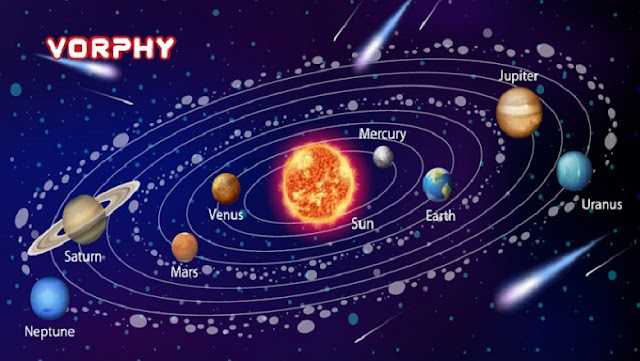We have all looked up to the night sky to enjoy the sacred beauty of the universe. We have always been curious about the vast expanse of the universe and its remarkable collection of unique planets and shining stars.
Today, let's embark on an exciting journey to learn something new about our home in the galaxy - Earth and our SolarSystem.
THE EARTH:
The warm atmosphere, plenty of water (about 71% of the surface cover) and habitable temperatures make life on Earth possible. The Earth is not a perfect sphere. It swells by 0.3% at the equator as it rotates on its axis at about 1,674 km/h. It is also tilted on its axis by about 23.4 degrees, causing our annual cycle of seasons.
The Earth's outer core is made of molten iron and nickel, which generates an electric current. The rotation of our planet causes a dynamo effect that creates a magnetic field around the Earth, protecting us from solar radiation.
Then comes the mantle, which is made up of magma, which is molten rock. The outermost layer, called the crust, has several regions with tectonic plates. Magma in the mantle causes these plates to move and collide, causing earthquakes, volcanic eruptions, mountain formation and ocean trenches.
This process recycles carbon as microscopic organisms and plants fall into the space created by the moving plates. This process extracts carbon from the atmosphere and creates a cool crust as the magma solidifies.
Thanks to these favourable conditions, life thrives on planet Earth. Solar systems:
About 4.5 billion years ago, a dense cloud of interstellar gas and dust collapsed and formed a spinning disk of matter called a solar nebula.
Gravity pulls more matter into the center and the core is so compressed that it combines hydrogen atoms to form helium. It released an enormous amount of energy, creating our Sun.
Going deeper into the disk, the matter has aggregated and formed larger objects. Their gravity shapes them into spheres, and this is how our planets, asteroids, and moons are formed. Now that we know our history, let's learn an interesting fact about each planet in the solar system.
Mercury takes about 58.6 Earth days to complete a day!
Venus is the hottest planet in the solar system due to its toxic atmosphere of clouds of carbon dioxide and sulfuric acid, which traps heat and maximizes the greenhouse effect.
Rocks on Mars are mainly composed of iron, which oxidizes and turns red. Mars appears red when this rusty dust is thrown into the atmosphere
The infamous Red Spot on Jupiter is a giant storm, even bigger than the earth! It has been raging for over 300 years already!
Saturn's rings are fragments of comets, asteroids, broken moons, and dust particles that are ripped apart by its gravity before entering its atmosphere.
Uranus is tilted on its axis by an angle of 97.77 degrees, causing it to turn to the side.
Neptune takes about 165 Earth years to orbit the sun!
We hope you now have a better understanding of our home in the universe. But don't be intimidated by the universe, because the purpose of the universe is not to feel small in comparison, but to be grateful to be a part of something so great.








0 Comments